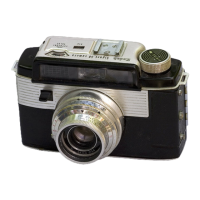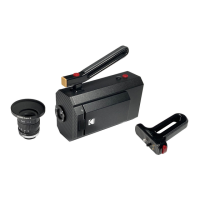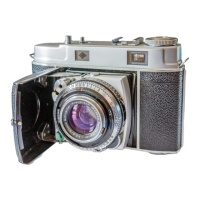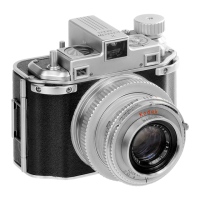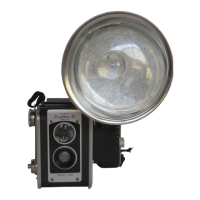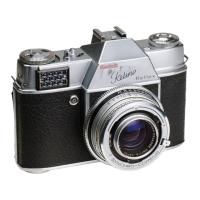It
is often desired
to
superimpose
two
or
more scenes for impression-
istic and
photo-montage
effects.
This
is done simply
by
winding
back
and
taking
the
following scene
or
scenes on
the
same
strip
of
film on
which
the
first scene was made. Care should be taken
to
give approxi-
mately
the
same exposures
to
each scene, unless
it
is desired
to
subdue
one
of
them
.
ANIMATION
ONE
of
the
most
absorbing fields
of
the
Cine-Kodak Special is anima-
tion
..
.
the
cinematographic technique
of
endowing
inanimate
objects
with
life. You
may
wish
to
try
the
simpler type
where
chess men play
their
own
game and books, ash trays, etc. roam around over a table top.
Or
you
may
be sufficiently fascinated by
the
almost limitless possibili-
ties
of
animation
to
try
your
hand
at
the
more complicated type, say
of
a playlet
with
jointed dolls for actors.
To
animate a subject, expose a single frame, move
the
subject a
bit,
expose
another
frame, move
the
subject a
little
more, and so on.
The
amount you move
the
subject each time determines
the
speed
of
the
action on
the
screen.
It
is necessary
to
decide on
the
approximate speed
desired; for instance,
if
you
want
a doll
to
raise its
arm
in one second,
devote sixteen frames
to
that
movement.
In jointed doll animation, much can be learned from studying single
Double exposure, including a living
subject
and an
animated
dott.
67
frames from films
you
have made
of
living
subjects.
Other
applications
of
animation
are: Ani-
ma ted
ti
tles ; graphs
that
draw
themselves;
machines
and
other
manufactured products
that
assemble them-
selves; following
the
course
of
an
auto
tour
with
an
animated
line
on a map, etc.,
etc
.

